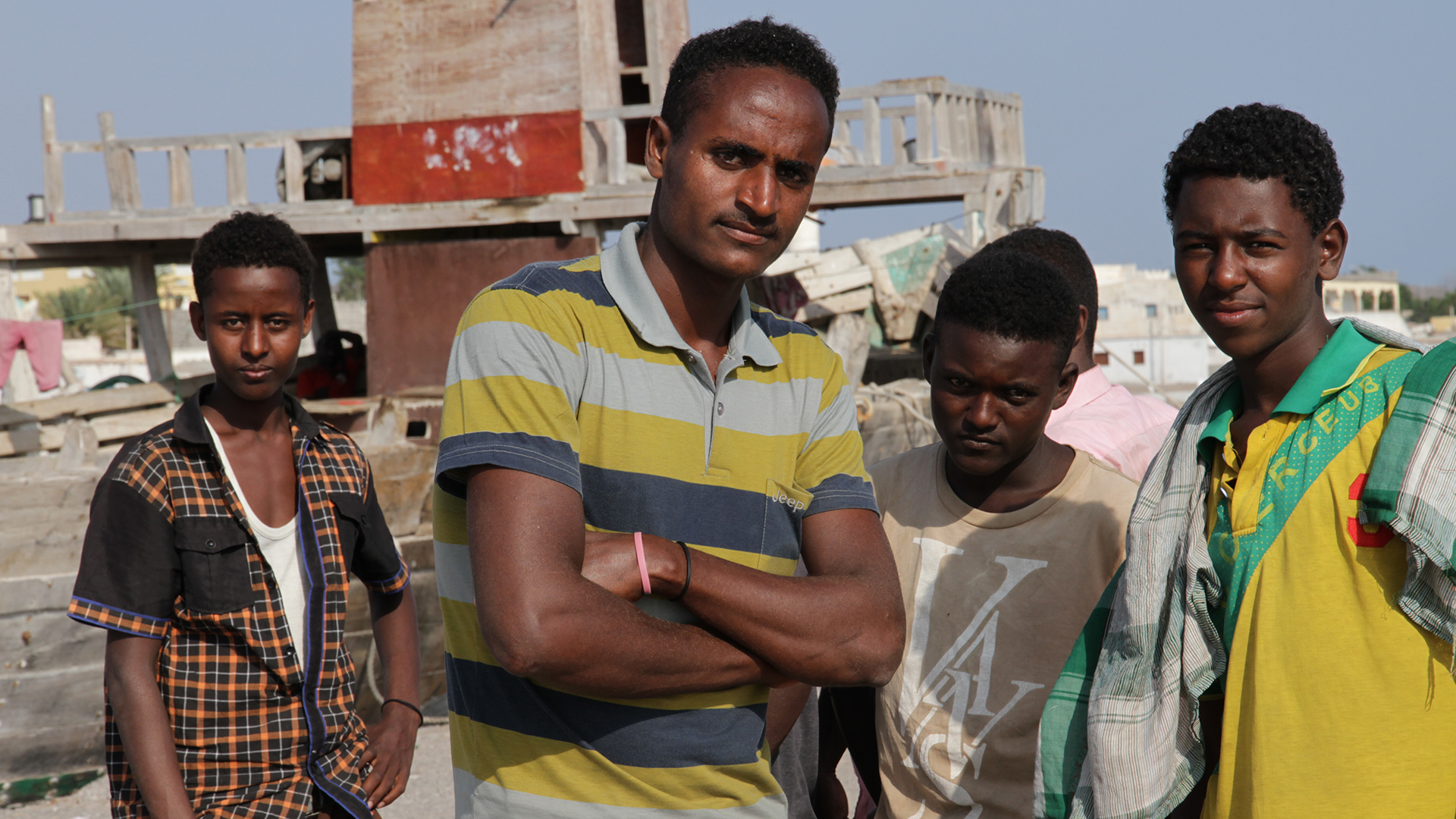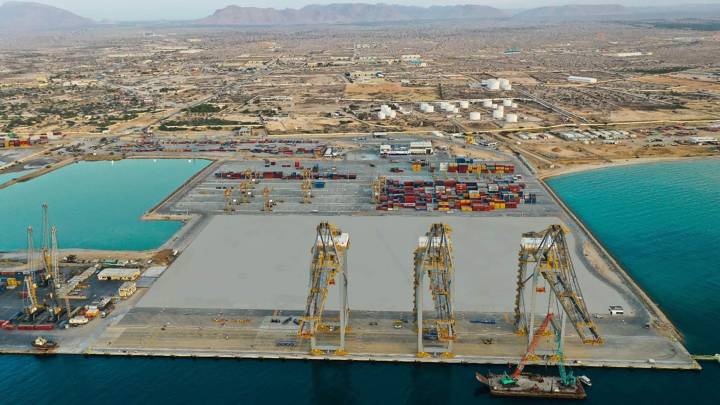How a geopolitical battleground is also a major migration route
The Red Sea is a complex geopolitical theatre, serving as a thoroughfare for 30 percent of global container traffic and 12% of global trade. It also serves as a stage for Yemen’s Civil War and its international backers, Houthi demonstrations of solidarity with the people of Gaza through attacks on commercial vessels linked to Israel, Saudi Arabia’s efforts to secure the political and economic stability of its coastline for its national development plans, Ethiopia’s bid for additional sea access through its new deal with Somaliland, international competition for commercial and military footholds across ports along the Red Sea and for the consequences of the Sudan War which shall reach the 600-day mark this December.
Numerous analyses have been carried out by thinktanks and policy pundits underscoring the importance of maintaining influence in this arena, which sits at the joining of two continents, two major waterways and touches eight countries. Despite the extensive media and political coverage, the lack of attention paid to the deeply entrenched migration dynamics across the Red Sea is noteworthy. In response, this article examines the migration dynamics at play across the globally significant, but geographically narrow stretch of ocean between the Horn of Africa and the Gulf of Aden and how these impact the lives of migrants along this ‘Eastern Route’.
Migration along the Eastern Route – a popular although extremely dangerous route
For the last decade, the Red Sea has served as a migration corridor for more than one hundred thousand migrants each year who travel from the Horn of Africa, mainly Ethiopia, departing from coastal cities in Djibouti or Somalia, to the Arabian Peninsula, for most with the goal of reaching Saudi Arabia for better employment opportunities; and a smaller number of returning migrants as well as Yemenis and Syrians who cross the sea in the opposite direction, seeking to get back home, find temporary shelter in the Horn of Africa, or transit the Horn to reach Kenya or South Africa.
In most years, these numbers outstrip those observed along all other mixed migration routes originating on the African content – the Central and Western Mediterranean Routes, the Atlantic and Western Indian Ocean Routes and the Southern Route – combined. Yet, these other migration routes, with the exception of the Southern Route, receive far more international attention, likely because their end points fall within the ‘Global North’.
One of the marked characteristics of this route is its resilience and the determination of migrants to move along it despite the many well-known risks both en route and once in destination. These include trafficking, drowning at sea, becoming caught in the crossfire of the war in Yemen, abuse or death at the Saudi-Yemen border at the hands of Saudi border officials, detention, deportation and labour exploitation to name some of the most notable risks.
Since August 2023, Yemen and Saudi Arabia have embarked on a joint crackdown, increased surveillance, pushbacks and ramping up of counter-smuggling operations. After more than a decade of an average of 100,000 people making this crossing, as of the beginning of September the total number of recorded arrivals in Yemen stood at 13,371, which is only 14.7% of the total in the same period in 2023, according to IOM DTM.
A cursory glance at the figures might lead to an assumption that Yemen and Saudi Arabia’s joint military campaigns or perhaps the general insecurity on the Red Sea or the international military presence have curbed the movement of people along this route with a marked decrease in recorded departures from Djibouti and a reduction in recorded arrivals to Yemen. However, while this could be the case, it is highly likely the reduction in recorded arrivals represent an increasing issue with access to migrants in key transit locations along this route – locations where IOM has until recently been monitoring movements through their DTM flow monitoring initiative. Indeed as IOM have noted themselves areas of the West Coast of Yemen have been inaccessible for assessments for much of 2024 and such the data reported is not representative of all arrivals in Yemen.
Further, looking at the number of migrant deaths along this route (and this is just those that are recorded) 2024 is actually the most deadly year on record with 337 migrants deaths due to drowning. These high figures paint a dark picture and suggest that this route remains very much active albeit increasingly deadly, despite the inability of data collection initiatives to accurately capture figures.
Indeed, without addressing the drivers of migration, one should not expect irregular migration to decrease, no matter the risks involved. Instead, (and as tragically indicated in the rising number of deaths along this route) migrants will likely be pushed to use more clandestine and dangerous routes to avoid detection, causing an even greater reliance on smugglers. Or alternatively, they risk becoming stranded in places of transit along the route – likely in Djibouti and Somalia – at risk of destitution, trafficking and exploitation, until military campaigns subside.
Further, instead of impeding movement, rising geopolitical tensions in the Red Sea leading to disruptions in trade, longer shipping routes and increased food prices is likely only going to serve to intensify pre-existing migration drivers of households already struggling with severely limited resources. This may lead to an even more important migration-as-adaptation strategy and what is often referred to as the ‘New Economics of Labour Migration’ – which is a household strategy to spread risk in the face of greater economic constraints involving the international migration of select, typically younger, family members. In this way, political dynamics in the Red Sea risk intensifying the economic dynamics driving people from communities of origin, combining in a way that ensures the continuation of the Eastern Route as not only one of the most populous, but also most dangerous migration routes.
Proliferation of smuggling and trafficking networks
Smuggling networks along the Eastern Route are notorious for their deception and exploitation of migrants, and for their transformation into trafficking networks along sections of the route. An IOM study found that 90% of migrants surveyed in Obock had used at least one smuggler from the time they left their origin communities until arriving in the Djiboutian coastal city, and this figure rises to 100% in order to make the Red Sea crossing to Yemen.
A 2023 study supported by MMC collected testimonies from migrants on the abuses they faced at the hands of smugglers. Multiple interviewed migrants described being bought and sold by different smugglers, rather than paying fees for services, as if one were owned and controlled by these networks: “As the compound had guards, nobody could dare to escape. They didn't even allow us to use the toilet, nor they provided us with food and water. Just within two or three days, they sell you to the next brokers. They didn't even ask us for money." The migrants went on to explain the increase in their vulnerability once they survived the sea crossing and reached Yemen: “The situation changes when one travels across the sea to Yemen, where there is an increased and inescapable risk of kidnapping, human trafficking, and disappearance of migrants.” This greater threat was linked to the presence of different militia which operated like criminal gangs and trafficked migrants to fund their war efforts at the local level.
The civil war in Yemen for the past decade, the risks of drowning, exploitation, (sexual) violence, torture and killings have done nothing to deter people from migration to and through Yemen. On the contrary, from 2016 onwards, with the exception of the pandemic years, the number of arrivals in Yemen remained at above 100,000, while in most years between 2008 and 2014 (when the war started), the numbers were below 100,000. It is actually a common phenomenon - as we have seen in Libya - that insecurity, conflict and a general breakdown of the rule of law lead to an increase in transit migration, as there are fewer risks of detection and increased impunity for smugglers and traffickers. It is likely over time the conflict and insecurity plaguing the Red Sea, will remain fertile ground for the proliferation of exploitive smuggling and trafficking dynamics. Not only because of the power vacuum that state fragility creates, but also because it incentivises the commodification of migrants by armed groups and it forces migrants to engage smugglers to have any hope of reaching their destinations. Security and counter-smuggling operations only serve to shift the routes that smugglers chart and to raise their fees – most of the risk is offset to the migrants.
Amidst the increased attention on and media coverage of what’s currently happening in the Red Sea, we see scant reference to the thousands of Ethiopian and Somali men, women, boys and girls who cross, or intend to cross, the Red Sea and Gulf of Aden in search of a better life. An attack on a commercial vessel in the Red Sea tends to receive more attention than the drowning of hundreds of migrants off the coast of Djibouti or Yemen. Similarly, as we have seen before with our reporting on the ongoing killing of migrants by Saudi border guards, it seems the fate of migrants is ignored if there are bigger geopolitical stakes at play. However, it is crucial to not forget about the people travelling along one of the most significant routes globally, and to take into account the economic, human rights and protection consequences of the Red Sea crisis for those on the move, as well as those compelled to move but no longer able to do so. Countries in the region need to be held to account in terms of their respect for human rights, regardless of whether they are allies or foes. The desire to maintain political alliances should not come at the costs of ignoring gross violations of human rights.




